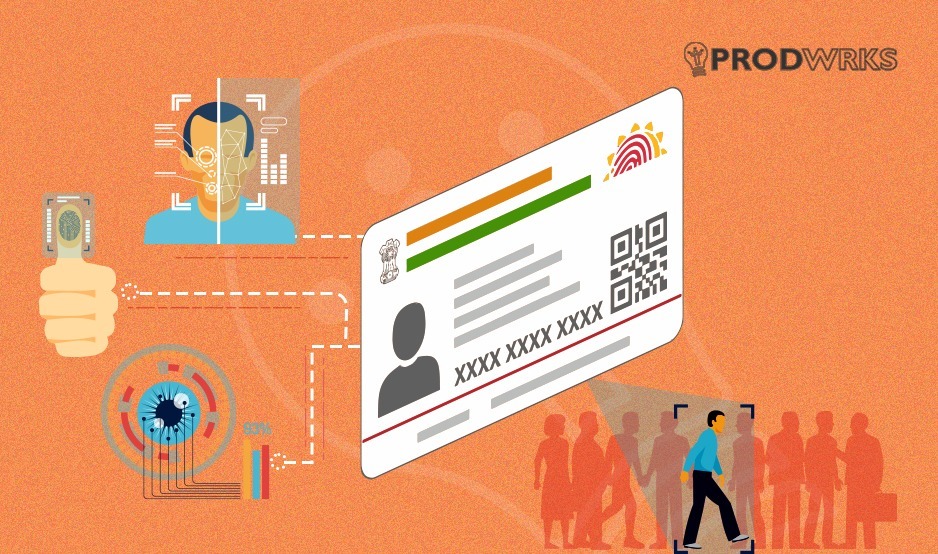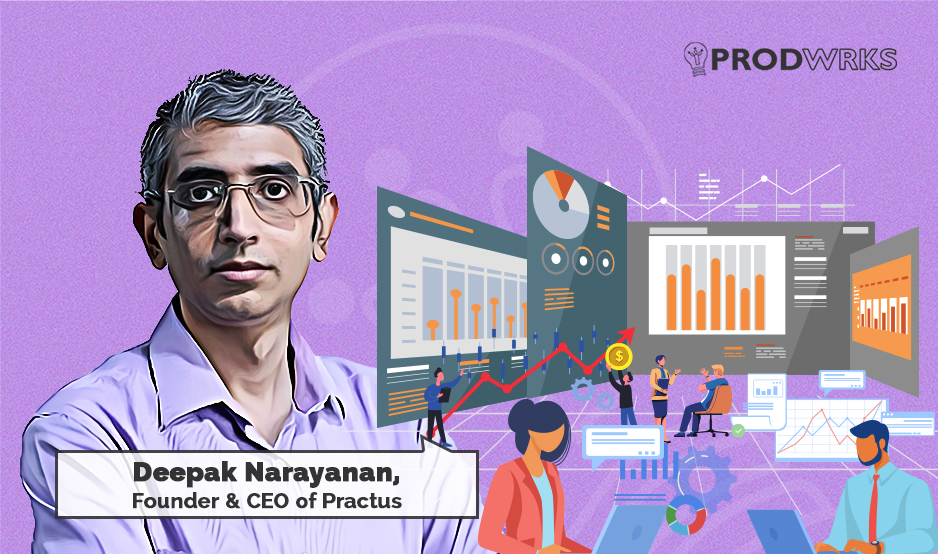
The foundational layer of India’s digital public infrastructure, India Stack, is the Identity layer, facilitating access to a unique and verifiable identity for every resident as a public resource. At the heart of this system is Aadhaar, which establishes a presence-less foundation within India’s digital framework. Aadhaar, a biometric identity solution, requires minimal information and incurs low marginal costs per identification.
India’s national identity program, Aadhaar, stands as the world’s most extensive biometric identification system, boasting enrollment from over 1.3 billion individuals! This program has fundamentally transformed the delivery of government services in India.
Launched in 2010, Aadhaar aimed to tackle several issues faced by India, including the absence of formal identity proof, fraudulent activities, duplication, and financial exclusion. Aadhaar instils a higher level of confidence and trust among individuals, fostering trust both in person-to person and person-to-system, surpassing other forms of identification in India. This ID system not only enhances security but also simplifies the lives of citizens and facilitates business operations.
What is Aadhaar?
Aadhaar, a 12-digit unique identification number issued by the UIDAI, is a testament to India’s commitment to efficient governance and inclusive development. Regardless of age or gender, any Indian resident can voluntarily enroll for an Aadhaar by providing minimal demographic and biometric information. This process offered free of charge, guarantees a singular Aadhaar number after meticulous de-duplication, ensuring its uniqueness.
This unique number is a powerful policy tool, eliminating duplicates and counterfeit identities. Aadhaar has become the linchpin for various government welfare schemes, enhancing service delivery and fostering transparency. As a strategic instrument for social and financial inclusion, it streamlines public sector services, optimizes fiscal budgets, and promotes people-centric governance, all while increasing convenience.
More than just a number, Aadhaar transformed into a permanent financial address for Indian citizens, paving the way for financial inclusion among the marginalized. It embodies the ideals of distributive justice and equality, offering a lifeline to the underprivileged sections of society. Underpinning the broader ‘Digital India’ initiative, Aadhaar ensures that every resident possesses a unique identity, marking a significant milestone in the realm of biometric identification systems worldwide.
The Aadhaar identity platform, bolstered by its core features of Uniqueness, Authentication, Financial Address, and e-KYC, empowers the Indian government to seamlessly deliver subsidies, benefits, and services directly to the residents.
Indians who have an Aadhaar number have the capability to engage in a variety of activities including:
- Verifying personal attributes like name, age, address, mobile number, email address, and gender from a remote location through two-factor or biometric authentication.
- Obtaining digitally signed and widely recognized duplicates of lifelong records, such as driver’s licences, educational diplomas, insurance policies, and more.
- Affixing digital signatures to documents or messages with the support of a government-endorsed digital signature service.
The foundational principles guiding Aadhaar’s technology backbone include:
- Open Architecture: Aadhaar operates on an open and interoperable system, enabling seamless integration with various other systems and applications.
- Design for Scale: The Aadhaar system is meticulously designed to be scalable, ensuring its ability to meet the demands of a burgeoning population.
- Data Security: Aadhaar places a paramount emphasis on safeguarding user data, ensuring both the privacy and security of individual information.
Role of UIDAI
In the Aadhaar system, there are various stakeholders working together to ensure its smooth operation. The UIDAI, at the core of this network, plays a vital role. This agency collaborates with different groups, helping new users join and updating existing records. Additionally, UIDAI oversees the authentication process, making sure it’s both secure and efficient.
Established under the Aadhaar Act of 2016, UIDAI’s mission was to provide every Indian resident with a unique identification number, known as “Aadhaar.” These numbers weren’t just random; they were carefully designed to be reliable, preventing duplicates and fake identities. UIDAI also made sure that verifying these identities was simple and didn’t cost much, ensuring the process’s integrity.
Within the UIDAI setup, two fundamental components exist: the Enrolment System and the Authentication System.
- The Enrolment System, comprising Registrars and PPP-based Enrolment Agencies, acts as the gateway for new entrants, seamlessly integrating them into the Aadhaar network.
- The Authentication System, , facilitated by Authentication Service Agencies (ASAs) and Authentication User Agencies (AUAs) from various Government and non-Government entities, ensures real-time authentication.
Features of Aadhaar
Unique Identity Assurance: At the heart of Aadhaar lies its unique identity feature, achieved through a meticulous process of demographic and biometric deduplication. During enrolment, a resident’s information is cross-checked with the UIDAI database, ensuring that only one Aadhaar number is generated per individual. This ensures the system’s integrity and prevents multiple enrolments, fostering trust in the Aadhaar identity.
Nationwide Accessibility: Aadhaar’s true power unfolds in its nationwide portability. In a country where millions migrate across states or from rural areas to bustling urban centres, Aadhaar offers seamless authentication online. This flexibility transcends geographical boundaries, making essential services accessible to every Indian, regardless of their location.
Anonymity and Privacy: Aadhaar numbers are ingeniously random, devoid of any inherent meaning or information. During enrolment, minimal demographic and biometric details are collected, omitting sensitive information like caste, religion, income, or health. This anonymity ensures privacy while providing a robust identification system, enhancing security and trust.
Seamless Scalability: Aadhaar’s technological foundation is both open and scalable, a crucial aspect for a country as vast and diverse as India. Resident data is stored centrally, allowing online authentication from any corner of the nation. What sets Aadhaar apart is its ability to handle immense traffic – designed to process a staggering 100 million authentications daily. This scalability ensures that Aadhaar remains effective, regardless of the population’s growth or the evolving digital landscape.
Open Source Architecture: Aadhaar liberates itself from specific vendor dependencies through its open-source architecture. By embracing open technologies, it avoids reliance on particular computer hardware, operating systems, or database vendors. This vendor-neutral approach fosters innovation and allows the coexistence of various technologies within the same application. It’s a testament to Aadhaar’s adaptability and forward-thinking design, ensuring its relevance and accessibility for generations to come.
Real-World use cases of Aadhaar
Direct Benefit Transfer (DBT): Aadhaar serves as the linchpin for direct benefit transfer (DBT) initiatives, ensuring that government scheme beneficiaries receive their entitled benefits securely and efficiently. By authenticating individuals, Aadhaar guarantees that welfare reaches the right hands, transforming lives across the nation.
Digital Life Certificates: For senior citizens, Aadhaar offers a lifeline through digital life certificates. These certificates, generated using Aadhaar, validate the existence of seniors for various essential purposes. This digital documentation simplifies bureaucratic processes, allowing the elderly to navigate life’s necessities with ease.
Aadhaar-Based Electronic Signatures: Aadhaar enableds electronic signatures that hold legal validity. Individuals can utilise Aadhaar to create electronic signatures, streamlining transactions and documentation processes. This innovation ensures the authenticity of digital agreements, enhancing the ease of doing business and personal transactions.
Biometric Attendance System: In educational institutions and workplaces, Aadhaar powers efficient attendance tracking systems. By integrating biometric data, Aadhaar ensures accurate and tamper-proof attendance records. This technology not only promotes punctuality but also enhances administrative efficiency, contributing to a streamlined and accountable environment.
Aadhaar-Enabled Payment System (AEPS): Aadhaar seamlessly integrates into everyday life through the Aadhaar-enabled payment system (AEPS). Individuals can make secure payments for goods and services, transforming financial transactions. By simplifying payments, Aadhaar empowers individuals, fostering a digital economy that is inclusive, reliable, and accessible to all.
Aadhaar Authentication
Aadhaar, employed in processes like e-KYC and across digital payment platforms such as UPI, APB, AEPS, DBT, GST, e-filing of income tax returns, and e-sign, has significantly increased transparency, accountability, and trust in services, transactions, and payments. The primary objective of the Aadhaar initiative is to equip the population with secure and adaptable digital identities, facilitating swift user authentication. Presently, there exist several methods through which an individual can verify their identity using Aadhaar.
E-authentication (E-auth): This method involves sending a user’s Aadhaar details to the UIDAI server, which responds with a confirmation, verifying the provided information’s accuracy.
e-KYC (Electronic Know Your Customer): By obtaining user consent and submitting their Aadhaar number, the system retrieves the complete KYC data along with demographic details and the user’s photograph, ensuring comprehensive validation.
QR Code Scanning: Each Aadhaar card features a QR code that, when scanned using UIDAI-built apps, enables instant verification against the UIDAI database. Both physical and digital Aadhaar cards can be authenticated using this method.
Offline XML Authentication: Users access the UIDAI website, generate an XML object with a digital signature, and share it with parties requiring verification. The recipient can easily authenticate the user’s identity by verifying the digital signature.
e-Aadhaar: Users can obtain digitally signed PDF copies of their Aadhaar cards from the UIDAI database. Legally equivalent to physical cards, these e-Aadhaar PDFs provide a convenient and secure means of authentication.
It’s important to note that E-auth and e-KYC services are exclusively available to select entities like banks, licensed NBFCs, telecom companies, and government bodies. Developers from other organizations are directed towards QR code scans, e-Aadhaar, or offline XML methods for Aadhaar-based identity verification. By providing this diverse range of options, Aadhaar ensures its utility across various sectors, promoting secure, seamless digital interactions for all.
Utilities provided by GoI to Aadhaar holders
Digilocker: Digitally Secure Document Management
Digilocker, a government-provided utility for Aadhaar holders, opens a realm of possibilities. By using a one-time password sent to their Aadhaar-linked mobile number, users can access a treasure trove of digitally signed, legally valid electronic documents.
More than 4.6 billion documents, spanning driver’s licences, educational diplomas, and insurance policies, have been directly issued into Digilocker by authorities. With 1,460 institutions serving as document issuers and 233 integrated as requesters, Digilocker ensures seamless document verification with user consent.
eSign: Redefining Digital Signatures
eSign, built atop Aadhaar, empowers every Aadhaar holder to create legally recognized digital signatures effortlessly. By obtaining consent through a one-time password sent to the Aadhaar-linked mobile number, users can sign documents on any device, anytime. This innovation has streamlined workflows across diverse sectors, including finance, law, and healthcare.
For developers seeking certified eSign integration, the pathway involves enrollment as eSign Application Service Providers (ASPs). By joining this network, developers contribute to the widespread adoption of secure digital signatures, fostering a seamless and trustworthy digital landscape.
Aadhaar-Driven Solutions
Xoxoday: MobileFirst Applications crafted a mobile app for Xoxoday, leveraging Aadhaar authentication. This strategic move ensures that only authorised users can access the app, enhancing security and delivering a tailored experience to each user.
Yellow Metal: For Yellow Metal, MobileFirst Applications designed a customer loyalty program integrating Aadhaar authentication. By employing Aadhaar, Yellow Metal can authenticate users, enabling personalised offers and efficient tracking of customer spending, enhancing customer satisfaction and engagement.
eNPS by NSDL Protean: MobileFirst Applications revolutionised pension management through eNPS, utilising Aadhaar and UPI for secure payments. This innovative app allows users in India to manage their pension savings conveniently, making secure payments with ease, providing a streamlined and secure financial experience.
MyGlamm: In the realm of beauty and wellness, MobileFirst Applications introduced MyGlamm’s app, integrating Aadhaar for seamless authentication and UPI for payments. This unique approach enables users to purchase beauty products and book appointments without the need for cash, ensuring a convenient and cashless beauty experience.
What's in it for App Makers?
Aadhaar for app makers is a set of APIs and toolkits provided by the UIDAI. These tools, and APIs, empower app makers to seamlessly integrate Aadhaar authentication and verification within their applications and services. These APIs are used in diverse sectors like finance, telecommunications, and government services. These APIs serve as a robust foundation for developers to enhance the functionality and reliability of their applications.
For instance, applications with specific user demographics, such as exclusively serving women users, can utilise Aadhaar numbers for verification purposes. This tailored approach not only streamlines user authentication but also elevates the security measures within the application. By leveraging Aadhaar APIs, app makers can ensure the identity verification of users, fostering an environment of trust and reliability within their services.



